Vitamin C For Teenager Philippines
Vitamin C For Teenager Philippines
Wikipedia portal for content related to Medicine
The Medicine Portal

Medicine is the science and practice of caring for a patient, managing the diagnosis, prognosis, prevention, treatment, palliation of their injury or disease, and promoting their health. Medicine encompasses a variety of health care practices evolved to maintain and restore health by the prevention and treatment of illness. Contemporary medicine applies biomedical sciences, biomedical research, genetics, and medical technology to diagnose, treat, and prevent injury and disease, typically through pharmaceuticals or surgery, but also through therapies as diverse as psychotherapy, external splints and traction, medical devices, biologics, and ionizing radiation, amongst others.
Medicine has been practiced since prehistoric times, during most of which it was an art (an area of skill and knowledge) frequently having connections to the religious and philosophical beliefs of local culture. For example, a medicine man would apply herbs and say prayers for healing, or an ancient philosopher and physician would apply bloodletting according to the theories of humorism. In recent centuries, since the advent of modern science, most medicine has become a combination of art and science (both basic and applied, under the umbrella of medical science). While stitching technique for sutures is an art learned through practice, the knowledge of what happens at the cellular and molecular level in the tissues being stitched arises through science.
Prescientific forms of medicine are now known as traditional medicine or folk medicine, which remains commonly used in the absence of scientific medicine, and are thus called alternative medicine. Alternative treatments outside of scientific medicine having safety and efficacy concerns are termed quackery. (Full article...)
Featured articles are displayed here, which represent some of the best content on English Wikipedia.
-

Image 1

Meningitis is an acute inflammation of the protective membranes covering the brain and spinal cord, known collectively as the meninges. The most common symptoms are fever, headache, and neck stiffness. Other symptoms include confusion or altered consciousness, vomiting, and an inability to tolerate light or loud noises. Young children often exhibit only nonspecific symptoms, such as irritability, drowsiness, or poor feeding. If a rash is present, it may indicate a particular cause of meningitis; for instance, meningitis caused by meningococcal bacteria may be accompanied by a characteristic rash.
The inflammation may be caused by infection with viruses, bacteria or other microorganisms, and less commonly by certain drugs. Meningitis can be life-threatening because of the inflammation's proximity to the brain and spinal cord; therefore, the condition is classified as a medical emergency. A lumbar puncture, in which a needle is inserted into the spinal canal to collect a sample of cerebrospinal fluid (CSF), can diagnose or exclude meningitis. (Full article...)
-

Image 2

William Samuel Sadler (June 24, 1875 – April 26, 1969) was an American surgeon, self-trained psychiatrist, and author who helped publish The Urantia Book. The book is said to have resulted from Sadler's relationship with a man through whom he believed celestial beings spoke at night. It drew a following of people who studied its teachings.
A native of Indiana, Sadler moved to Michigan as a teenager to work at the Battle Creek Sanitarium. There he met the physician and health-food promoter John Harvey Kellogg, co-inventor of corn flakes breakfast cereal, who became his mentor. Sadler married Kellogg's niece, Lena Celestia Kellogg, in 1897. He worked for several Christian organizations and attended medical school, graduating in 1906. Sadler practiced medicine in Chicago with his wife, who was also a physician. He joined several medical associations and taught at the McCormick Theological Seminary. Although he was a committed member of the Seventh-day Adventist Church for almost twenty years, he left the denomination after it disfellowshipped his wife's uncle in 1907. Sadler and his wife became speakers on the Chautauqua adult education circuit in 1907, and he became a highly paid, popular orator. He eventually wrote over 40 books on a variety of medical and spiritual topics advocating a holistic approach to health. Sadler extolled the value of prayer and religion but was skeptical of mediums, assisting debunker Howard Thurston, and embraced the scientific consensus on evolution. (Full article...)
-

Image 3
Debora Green (née Jones; born February 28, 1951) is an American physician who pleaded no contest to setting a 1995 fire which burned down her family's home and killed two of her children, and to poisoning her husband with ricin with the intention of causing his death. The case was sensational, and covered heavily by news media, especially in the Kansas–Missouri area, where the crimes occurred. Though Green has petitioned for a new trial twice in recent years, her requests have not been successful.
Green married Michael Farrar in 1979 while practicing as an emergency physician. The marriage was tumultuous, and Farrar filed for divorce in July 1995. Between August and September 1995, Farrar repeatedly fell violently ill, and despite numerous hospitalizations his doctors could not pinpoint the source of his illness. Green's emotional stability deteriorated and she began to drink heavily, even while supervising her children. On October 24, 1995, the Farrar family home, occupied by Green and the couple's three children, caught fire. Kate Farrar and Debora Green escaped without harm, but despite the efforts of firefighters, Timothy and Kelly Farrar died in the blaze. Investigation showed that trails of accelerant in the house led back to Green's bedroom, and that the source of Michael Farrar's intractable illness had been ricin, a poison served to him in his food by Green. (Full article...)
-

Image 4

Four of the restaurants in The Dalles affected by the attack
In 1984, 751 people suffered food poisoning in The Dalles, Oregon, US due to the deliberate contamination of salad bars at ten local restaurants with Salmonella. A group of prominent followers of Rajneesh (later known as Osho) led by Ma Anand Sheela had hoped to incapacitate the voting population of the city so that their own candidates would win the 1984 Wasco County elections. The incident was the first and is the single largest bioterrorist attack in United States history.
Having previously gained political control of Antelope, Oregon, Rajneesh's followers, who were based in nearby Rajneeshpuram, sought election to two of the three seats on the Wasco County Circuit Court that were up for election in November 1984. Fearing they would not gain enough votes, some Rajneeshpuram officials decided to incapacitate voters in The Dalles, the largest population center in Wasco County. The chosen biological agent was Salmonella enterica Typhimurium, which was first delivered through glasses of water to two County Commissioners and then, on a larger scale, at salad bars and in salad dressing. (Full article...)
-

Image 5

Coeliac disease or celiac disease is a long-term autoimmune disorder, primarily affecting the small intestine, where individuals develop intolerance to gluten, present in foods such as wheat, rye and barley. Classic symptoms include gastrointestinal problems such as chronic diarrhoea, abdominal distention, malabsorption, loss of appetite, and among children failure to grow normally. This often begins between six months and two years of age. Non-classic symptoms are more common, especially in people older than two years. There may be mild or absent gastrointestinal symptoms, a wide number of symptoms involving any part of the body, or no obvious symptoms. Coeliac disease was first described in childhood; however, it may develop at any age. It is associated with other autoimmune diseases, such as Type 1 diabetes mellitus and Hashimoto's thyroiditis, among others.
Coeliac disease is caused by a reaction to gluten, a group of various proteins found in wheat and in other grains such as barley and rye. Moderate quantities of oats, free of contamination with other gluten-containing grains, are usually tolerated. The occurrence of problems may depend on the variety of oat. It occurs in people who are genetically predisposed. Upon exposure to gluten, an abnormal immune response may lead to the production of several different autoantibodies that can affect a number of different organs. In the small bowel, this causes an inflammatory reaction and may produce shortening of the villi lining the small intestine (villous atrophy). This affects the absorption of nutrients, frequently leading to anaemia. (Full article...)
-

Image 6

Helicobacter pylori , previously known as Campylobacter pylori , is a gram-negative, microaerophilic, spiral (helical) bacterium usually found in the stomach. Its helical shape (from which the genus name, helicobacter, derives) is thought to have evolved in order to penetrate the mucoid lining of the stomach and thereby establish infection. The bacterium was first identified in 1982 by Australian doctors Barry Marshall and Robin Warren. H. pylori has been associated with lymphomas of the mucosa-associated lymphoid tissue in the stomach, esophagus, colon, rectum, or tissues around the eye (termed extranodal marginal zone B-cell lymphoma of the cited organ), and of lymphoid tissue in the stomach (termed diffuse large B-cell lymphoma).
H. pylori infection usually has no symptoms but sometimes causes gastritis (stomach inflammation) or ulcers of the stomach or first part of the small intestine. The infection is also associated with the development of certain cancers occurring in less than 20% of cases. Many investigators have suggested that H. pylori causes or prevents a wide range of other diseases, but many of these relationships remain controversial. (Full article...)
-

Image 7

Children need sensitive and responsive caregivers to develop secure attachments. RAD arises from a failure to form normal attachments to primary caregivers in early childhood.
Reactive attachment disorder (RAD) is described in clinical literature as a severe and relatively uncommon disorder that can affect children. RAD is characterized by markedly disturbed and developmentally inappropriate ways of relating socially in most contexts. It can take the form of a persistent failure to initiate or respond to most social interactions in a developmentally appropriate way—known as the "inhibited form". In the DSM-5, the "disinhibited form" is considered a separate diagnosis named "disinhibited attachment disorder".
RAD arises from a failure to form normal attachments to primary caregivers in early childhood. Such a failure could result from severe early experiences of neglect, abuse, abrupt separation from caregivers between the ages of six months and three years, frequent changes of caregivers, or a lack of caregiver responsiveness to a child's communicative efforts. Not all, or even a majority of such experiences, result in the disorder. It is differentiated from pervasive developmental disorder or developmental delay and from possibly comorbid conditions such as intellectual disability, all of which can affect attachment behavior. The criteria for a diagnosis of a reactive attachment disorder are very different from the criteria used in assessment or categorization of attachment styles such as insecure or disorganized attachment. (Full article...)
-

-

Image 9

Tourette syndrome or Tourette's syndrome (abbreviated as TS or Tourette's) is a common neurodevelopmental disorder that begins in childhood or adolescence. It is characterized by multiple movement (motor) tics and at least one vocal (phonic) tic. Common tics are blinking, coughing, throat clearing, sniffing, and facial movements. These are typically preceded by an unwanted urge or sensation in the affected muscles known as a premonitory urge, can sometimes be suppressed temporarily, and characteristically change in location, strength, and frequency. Tourette's is at the more severe end of a spectrum of tic disorders. The tics often go unnoticed by casual observers.
Tourette's was once regarded as a rare and bizarre syndrome and has popularly been associated with coprolalia (the utterance of obscene words or socially inappropriate and derogatory remarks). It is no longer considered rare; about 1% of school-age children and adolescents are estimated to have Tourette's, and coprolalia occurs only in a minority. There are no specific tests for diagnosing Tourette's; it is not always correctly identified, because most cases are mild, and the severity of tics decreases for most children as they pass through adolescence. Therefore, many go undiagnosed or may never seek medical attention. Extreme Tourette's in adulthood, though sensationalized in the media, is rare, but for a small minority, severely debilitating tics can persist into adulthood. Tourette's does not affect intelligence or life expectancy. (Full article...)
-

Image 10

A conventionalized image in a Roman "portrait" bust (19th-century engraving)
Hippocrates of Kos (; Greek: Ἱπποκράτης ὁ Κῷος, translit. Hippokrátēs ho Kôios ; c. 460 – c. 370 BC), also known as Hippocrates II, was a Greek physician of the Age of Pericles (Classical Greece), who is considered one of the most outstanding figures in the history of medicine. He is traditionally referred to as the "Father of Medicine" in recognition of his lasting contributions to the field, such as the use of prognosis and clinical observation, the systematic categorization of diseases, or the formulation of humoural theory. The Hippocratic school of medicine revolutionized ancient Greek medicine, establishing it as a discipline distinct from other fields with which it had traditionally been associated (theurgy and philosophy), thus establishing medicine as a profession.
However, the achievements of the writers of the Hippocratic Corpus, the practitioners of Hippocratic medicine, and the actions of Hippocrates himself were often conflated; thus very little is known about what Hippocrates actually thought, wrote, and did. Hippocrates is commonly portrayed as the paragon of the ancient physician and credited with coining the Hippocratic Oath, which is still relevant and in use today. He is also credited with greatly advancing the systematic study of clinical medicine, summing up the medical knowledge of previous schools, and prescribing practices for physicians through the Hippocratic Corpus and other works. (Full article...)
-

Image 11

The menstrual cycle is a series of natural changes in hormone production and the structures of the uterus and ovaries of the female reproductive system that make pregnancy possible. The ovarian cycle controls the production and release of eggs and the cyclic release of estrogen and progesterone. The uterine cycle governs the preparation and maintenance of the lining of the uterus (womb) to receive a fertilized egg. These cycles are concurrent and coordinated, normally last between 21 and 35 days in adult women, with a median length of 28 days, and continue for about 30–45 years.
Naturally occurring hormones drive the cycles; the cyclical rise and fall of the follicle stimulating hormone prompts the production and growth of oocytes (immature egg cells). The hormone estrogen stimulates the uterus lining to thicken to accommodate an embryo should fertilization occur. The blood supply of the thickened lining (endometrium) provides nutrients to a successfully implanted embryo. If implantation does not occur, the lining breaks down and blood is released. Triggered by falling progesterone levels, menstruation (a "period", in common parlance) is the cyclical shedding of the lining, and is a sign that pregnancy has not occurred. (Full article...)
-

Image 12

Cloth embroidered by a person diagnosed with schizophrenia
Schizophrenia is a mental disorder characterized by continuous or relapsing episodes of psychosis. Major symptoms include hallucinations (typically hearing voices), delusions, paranoia, and disorganized thinking. Other symptoms include social withdrawal, decreased emotional expression, and apathy. Symptoms typically come on gradually, begin in young adulthood, and in many cases never resolve. There is no objective diagnostic test; the diagnosis is used to describe observed behavior that may stem from numerous different causes. Besides observed behavior, doctors will also take a history that includes the person's reported experiences, and reports of others familiar with the person, when making a diagnosis. To diagnose someone with schizophrenia, doctors are supposed to confirm that symptoms and functional impairment are present for six months (DSM-5) or one month (ICD-11). Many people with schizophrenia have other mental disorders, especially substance use disorders, depressive disorders, anxiety disorders, and obsessive–compulsive disorder.
About 0.3% to 0.7% of people are diagnosed with schizophrenia during their lifetime. In 2017, there were an estimated 1.1 million new cases and in 2019 a total of 20 million cases globally. Males are more often affected and on average have an earlier onset, although some large reviews have not found gender differences in the prevalence of the disorder. The likely causes of schizophrenia include genetic and environmental factors. Genetic factors include a variety of common and rare genetic variants. Possible environmental factors include being raised in a city, cannabis use during adolescence, infections, the ages of a person's mother or father, and poor nutrition during pregnancy. (Full article...)
-

Image 13

Computer–aided reconstruction of a rotavirus based on several electron micrographs
Rotavirus is a genus of double-stranded RNA viruses in the family Reoviridae. Rotaviruses are the most common cause of diarrhoeal disease among infants and young children. Nearly every child in the world is infected with a rotavirus at least once by the age of five. Immunity develops with each infection, so subsequent infections are less severe; adults are rarely affected. There are nine species of the genus, referred to as A, B, C, D, F, G, H, I and J. Rotavirus A, the most common species, causes more than 90% of rotavirus infections in humans. Rotavirus E, which is seen in pigs, has not been confirmed as a distinct species.
The virus is transmitted by the faecal-oral route. It infects and damages the cells that line the small intestine and causes gastroenteritis (which is often called "stomach flu" despite having no relation to influenza). Although Rotavirus was discovered in 1973 by Ruth Bishop and her colleagues by electron micrograph images and accounts for approximately one third of hospitalisations for severe diarrhoea in infants and children, its importance has historically been underestimated within the public health community, particularly in developing countries. In addition to its impact on human health, rotavirus also infects other animals, and is a pathogen of livestock. (Full article...)
-

Image 14

Osteochondritis dissecans (OCD or OD) is a joint disorder primarily of the subchondral bone in which cracks form in the articular cartilage and the underlying subchondral bone. OCD usually causes pain during and after sports. In later stages of the disorder there will be swelling of the affected joint which catches and locks during movement. Physical examination in the early stages does only show pain as symptom, in later stages there could be an effusion, tenderness, and a crackling sound with joint movement.
OCD is caused by blood deprivation of the secondary physes around the bone core of the femoral condyle. This happens to the epiphyseal vessels under the influence of repetitive overloading of the joint during running and jumping sports. During growth such chondronecrotic areas grow into the subchondral bone. There it will show as bone defect area under articular cartilage. The bone will then possibly heal to the surrounding condylar bone in 50% of the cases. Or it will develop into a pseudarthrosis between condylar bone core and osteochondritis flake leaving the articular cartilage it supports prone to damage. The damage is executed by ongoing sport overload. The result is fragmentation (dissection) of both cartilage and bone, and the free movement of these bone and cartilage fragments within the joint space, causing pain, blockage and further damage. OCD has a typical anamnesis with pain during and after sports without any history of trauma. Some symptoms of late stages of osteochondritis dissecans are found with other diseases like rheumatoid disease of children and meniscal ruptures. However, the disease can be confirmed by X-rays, computed tomography (CT) or magnetic resonance imaging (MRI) scans. (Full article...)
-

Image 15
Race Against Time: Searching for Hope in AIDS-Ravaged Africa is a non-fiction book written by Stephen Lewis for the Massey Lectures. Lewis wrote it in early to mid-2005 and House of Anansi Press released it as the lecture series began in October 2005. Each of the book's chapters was delivered as one lecture in a different Canadian city, beginning in Vancouver on October 18 and ending in Toronto on October 28. The speeches were aired on CBC Radio One between November 7 and 11. The author and orator, Stephen Lewis, was at that time the United Nations Special Envoy for HIV/AIDS in Africa and former Canadian ambassador to the United Nations. Although he wrote the book and lectures in his role as a concerned Canadian citizen, his criticism of the United Nations (UN), international organizations, and other diplomats, including naming specific people, was called undiplomatic and led several reviewers to speculate whether he would be removed from his UN position.
In the book and the lectures, Lewis argues that significant changes are required to meet the Millennium Development Goals in Africa by their 2015 deadline. Lewis explains the historical context of Africa since the 1980s, citing a succession of disastrous economic policies by international financial institutions that contributed to, rather than reduced, poverty. He connects the structural adjustment loans, with conditions of limited public spending on health and education infrastructure, to the uncontrolled spread of AIDS and subsequent food shortages as the disease infected much of the working-age population. Lewis also addresses such issues as discrimination against women and primary education for children. To help alleviate problems, he ends with potential solutions which mainly require increased funding by G8 countries to levels beyond what they promise. (Full article...)
Selected image – show another
T1-weighted MRI scans (with contrast) of the same brain slice at monthly intervals. Bright spots indicate active lesions of multiple sclerosis.
Photo credit: Public domain (U.S. Brookhaven National Laboratory)
WikiProject
These are Good articles, which meet a core set of high editorial standards.
-

Image 1

Democratic Republic of the Congo & Uganda; areas affected by the epidemic.
The Kivu Ebola epidemic was an outbreak of Ebola virus disease (EVD) that ravaged the eastern Democratic Republic of the Congo (DRC) in Central Africa from 2018 to 2020. Between 1 August 2018 and 25 June 2020 it resulted in 3,470 reported cases. The Kivu outbreak also affected Ituri Province, whose first case was confirmed on 13 August 2018. In November 2018, the outbreak became the biggest Ebola outbreak in the DRC's history, and had become the second-largest Ebola outbreak in recorded history worldwide, behind only the 2013–2016 Western Africa epidemic. In June 2019, the virus reached Uganda, having infected a 5-year-old Congolese boy who entered Uganda with his family, but was contained.
A military conflict in the region that had begun in January 2015 hindered treatment and prevention efforts. The World Health Organization (WHO) described the combination of military conflict and civilian distress as a potential "perfect storm" that could lead to a rapid worsening of the outbreak. In May 2019, the WHO reported that since January 85 health workers had been wounded or killed in 42 attacks on health facilities. In some areas, aid organizations had to stop their work due to violence. Health workers also had to deal with misinformation spread by opposing politicians. (Full article...)
-

Image 2

The steeple sign as seen on an AP neck X-ray of a child with croup
Croup, also known as laryngotracheobronchitis, is a type of respiratory infection that is usually caused by a virus. The infection leads to swelling inside the trachea, which interferes with normal breathing and produces the classic symptoms of "barking/brassy" cough, inspiratorystridor and a hoarse voice. Fever and runny nose may also be present. These symptoms may be mild, moderate, or severe. Often it starts or is worse at night and normally lasts one to two days.
Croup can be caused by a number of viruses including parainfluenza and influenza virus. Rarely is it due to a bacterial infection. Croup is typically diagnosed based on signs and symptoms after potentially more severe causes, such as epiglottitis or an airway foreign body, have been ruled out. Further investigations, such as blood tests, X-rays and cultures, are usually not needed. (Full article...)
-

Image 3

A postprandial manometry of a patient with rumination syndrome showing intra-abdominal pressure. The "spikes" are characteristic of the abdominal wall contractions responsible for the regurgitation in rumination.
Rumination syndrome, or merycism, is a chronic motility disorder characterized by effortless regurgitation of most meals following consumption, due to the involuntary contraction of the muscles around the abdomen. There is no retching, nausea, heartburn, odour, or abdominal pain associated with the regurgitation, as there is with typical vomiting, and the regurgitated food is undigested. The disorder has been historically documented as affecting only infants, young children, and people with cognitive disabilities (the prevalence is as high as 10% in institutionalized patients with various mental disabilities).
It is increasingly being diagnosed in a greater number of otherwise healthy adolescents and adults, though there is a lack of awareness of the condition by doctors, patients and the general public.Rumination syndrome presents itself in a variety of ways, with especially high contrast existing between the presentation of the typical adult sufferer without a mental disability and the presentation of an infant and/or mentally impaired sufferer. Like related gastrointestinal disorders, rumination can adversely affect normal functioning and the social lives of individuals. It has been linked with depression. (Full article...)
-

Image 4

Gastroenteritis viruses: A = rotavirus, B = adenovirus, C = norovirus and D = astrovirus. The virus particles are shown at the same magnification to allow size comparison.
Gastroenteritis, also known as infectious diarrhea and gastro, is inflammation of the gastrointestinal tract; the stomach and intestine. Symptoms may include diarrhea, vomiting and abdominal pain. Fever, lack of energy and dehydration may also occur. This typically lasts less than two weeks. It is not related to influenza, even though in the US it is sometimes called the "stomach flu".
Gastroenteritis is usually caused by viruses, but bacteria, parasites, and fungus can also cause gastroenteritis. In children, rotavirus is the most common cause of severe disease. In adults, norovirus and Campylobacter are common causes. Eating improperly prepared food, drinking contaminated water or close contact with a person who is infected can spread the disease. Treatment is generally the same with or without a definitive diagnosis, so testing to confirm is usually not needed. (Full article...)
-

Image 5
Catherine Annie Neill (3 September 1921 – 23 February 2006) was a British pediatric cardiologist who spent the majority of her career at the Johns Hopkins Children's Center in Baltimore, where she worked alongside Helen B. Taussig. Her primary interest was congenital heart defects; she discovered one type of defect, scimitar syndrome, in 1960.
Over the course of her career, Neill co-directed the Baltimore Washington Infant Study of the 1980s, contributed to 100 journal articles and 40 book chapters, and co-authored two books. In 1970, she was elected a Fellow of the Royal College of Physicians. She retired twice, first in 1989 before returning to work and being promoted to professor of pediatrics and senior consultant for pediatric cardiology, and then again in 1993, though she continued to volunteer in the Hopkins medical archives. Her teaching and mentorship ability held her in esteem among colleagues and trainees; according to Edward Clark from the University of Utah, at the time, "a place for women in medicine was hard to find," and Neill's "quiet mentoring and support was one of the reasons so many women chose pediatric cardiology, because they had such a strong role model and mentor." Neill died in 2006 at 84 years old in nursing home care while visiting family in Wimbledon, London. (Full article...)
-

Image 6

Lorazepam, one of the more commonly prescribed benzodiazepines.
Benzodiazepines (BZD, BDZ, BZs), sometimes called "benzos", are a class of psychoactive drugs whose core chemical structure is the fusion of a benzene ring and a diazepine ring. As depressants—drugs which lower brain activity—they are prescribed to treat conditions such as anxiety, insomnia, and seizures. The first benzodiazepine, chlordiazepoxide (Librium), was discovered accidentally by Leo Sternbach in 1955 and was made available in 1960 by Hoffmann–La Roche, which soon followed with diazepam (Valium) in 1963. By 1977, benzodiazepines were the most prescribed medications globally; the introduction of selective serotonin reuptake inhibitors (SSRIs), among other factors, decreased rates of prescription, but they remain frequently used worldwide.
Benzodiazepines are depressants that enhance the effect of the neurotransmitter gamma-aminobutyric acid (GABA) at the GABAA receptor, resulting in sedative, hypnotic (sleep-inducing), anxiolytic (anti-anxiety), anticonvulsant, and muscle relaxant properties. High doses of many shorter-acting benzodiazepines may also cause anterograde amnesia and dissociation. These properties make benzodiazepines useful in treating anxiety, panic disorder, insomnia, agitation, seizures, muscle spasms, alcohol withdrawal and as a premedication for medical or dental procedures. Benzodiazepines are categorized as short, intermediate, or long-acting. Short- and intermediate-acting benzodiazepines are preferred for the treatment of insomnia; longer-acting benzodiazepines are recommended for the treatment of anxiety. (Full article...)
-

Image 7

Fig. 1. Pulvermacher's chain. The handles pointing away from the holder are insulated so that the physician can safely place the device in contact with any part of the patient's body.
The Pulvermacher chain, or in full as it was sold the Pulvermacher hydro-electric chain, was a type of voltaic battery sold in the second half of the 19th century for medical applications. Its chief market was amongst the numerous quack practitioners who were taking advantage of the popularity of the relatively new treatment of electrotherapy, or "electrification" as it was then known. Its unique selling point was its construction of numerous linked cells, rendering it mechanically flexible. A variant intended to be worn wrapped on parts of the body for long periods was known as Pulvermacher's galvanic chain or electric belt.
The Pulvermacher Company attracted a great deal of antagonism from the medical community due to their use of the names of well-known physicians in their advertising without permission. The nature of their business; in selling to charlatans and promoting quack practices also made them unpopular with the medical community. Despite this, the Pulvermacher chain was widely reported as a useful source of electricity for medical and scientific purposes, even amongst the most vocal critics of the Pulvermacher Company. (Full article...)
-

-

-

Image 10

Biotin, also called vitamin B7 , is one of the B vitamins. It is involved in a wide range of metabolic processes, both in humans and in other organisms, primarily related to the utilization of fats, carbohydrates, and amino acids. The name biotin derives from the Greek word "bios" (to live) and the suffix "-in" (a general chemical suffix used in organic chemistry). (Full article...)
-

Image 11
Anna Elisabeth Johansson Bågenholm (born 1970) is a Swedish radiologist from Vänersborg, who survived after a skiing accident in 1999 left her trapped under a layer of ice for 80 minutes in freezing water. During this time she became a victim of extreme hypothermia and her body temperature decreased to 13.7 °C (56.7 °F), one of the lowest survived body temperatures ever recorded in a human with accidental hypothermia. Bågenholm was able to find an air pocket under the ice, but suffered circulatory arrest after 40 minutes in the water.
After rescue, Bågenholm was transported by helicopter to the Tromsø University Hospital, where a team of more than a hundred doctors and nurses worked in shifts for nine hours to save her life. Bågenholm woke up ten days after the accident, paralyzed from the neck down and subsequently spent two months recovering in an intensive care unit. Although she has made an almost full recovery from the incident, late in 2009 she was still suffering from minor symptoms in hands and feet related to nerve injury. Bågenholm's case has been discussed in the leading British medical journal The Lancet, and in medical textbooks. (Full article...)
-

-

Image 13
German postage stamp from 1991, commemorating 750 years of the apothecary profession
The apothecaries' system, or apothecaries' weights and measures, is a historical system of mass and volume units that were used by physicians and apothecaries for medical recipes and also sometimes by scientists. The English version of the system is closely related to the English troy system of weights, the pound and grain being exactly the same in both. It divides a pound into 12 ounces, an ounce into 8 drachms, and a drachm into 3 scruples of 20 grains each. This exact form of the system was used in the United Kingdom; in some of its former colonies, it survived well into the 20th century. The apothecaries' system of measures is a similar system of volume units based on the fluid ounce. For a long time, medical recipes were written in Latin, often using special symbols to denote weights and measures.
The use of different measure and weight systems depending on the purpose was an almost universal phenomenon in Europe between the decline of the Roman Empire and metrication. This was connected with international commerce, especially with the need to use the standards of the target market and to compensate for a common weighing practice that caused a difference between actual and nominal weight. In the 19th century, most European countries or cities still had at least a "commercial" or "civil" system (such as the English avoirdupois system) for general trading, and a second system (such as the troy system) for precious metals such as gold and silver. The system for precious metals was usually divided in a different way from the commercial system, often using special units such as the carat. More significantly, it was often based on different weight standards. (Full article...)
-

-

Image 15

Malaria is a mosquito-borne infectious disease that affects humans and other animals. Malaria causes symptoms that typically include fever, tiredness, vomiting, and headaches. In severe cases, it can cause yellow skin, seizures, coma, or death. Symptoms usually begin ten to fifteen days after being bitten by an infected mosquito. If not properly treated, people may have recurrences of the disease months later. In those who have recently survived an infection, reinfection usually causes milder symptoms. This partial resistance disappears over months to years if the person has no continuing exposure to malaria.
Malaria is caused by single-celled microorganisms of the Plasmodium group. It is spread exclusively through bites of infected Anopheles mosquitoes, according to a 2014 WHO fact sheet. The mosquito bite introduces the parasites from the mosquito's saliva into a person's blood. The parasites travel to the liver where they mature and reproduce. Five species of Plasmodium can infect and be spread by humans. Most deaths are caused by P. falciparum, whereas P. vivax, P. ovale, and P. malariae generally cause a milder form of malaria. The species P. knowlesi rarely causes disease in humans. Malaria is typically diagnosed by the microscopic examination of blood using blood films, or with antigen-based rapid diagnostic tests. Methods that use the polymerase chain reaction to detect the parasite's DNA have been developed, but are not widely used in areas where malaria is common due to their cost and complexity. (Full article...)
Did you know – show different entries
General images – load new batch
The following are images from various Medicine-related articles on Wikipedia.
-

-

Image 2 Most countries have seen a tremendous increase in life expectancy since 1945. However, in southern Africa, the HIV epidemic beginning around 1990 has eroded national health. (from History of medicine)
-

-

Image 6 The Quaker-run York Retreat, founded in 1796, gained international prominence as a centre for moral treatment and a model of asylum reform following the publication of Samuel Tuke's Description of the Retreat (1813). (from History of medicine)
-

Image 8 Medical recipe concerning poisoning. Terracotta tablet, from Nippur, Iraq, 18th century BCE. Ancient Orient Museum, Istanbul (from History of medicine)
-

Image 9 Smallpox vaccination in Niger, 1969. A decade later, this was the first infectious disease to be eradicated. (from History of medicine)
-

Image 12 Monumental stone relief of a fish-garbed figure from the Temple of Ninurta in the Assyrian city of Kalhu, believed by some experts to be a representation of an āšipu, or exorcist-priest, who functioned as a kind of healer and primitive doctor (from History of medicine)
-

Image 19 Infographic showing how healthcare data flows within the billing process (from Medical billing)
-

Image 20 Life Expectancy of the total population at birth among several OECD member nations. Data source: OECD's iLibrary (from Health insurance)
-

Image 23 Primary care may be provided in community health centers. (from Health care)
-

Image 25 18th-century medical remedies collected by a British Gentry family (from History of medicine)
-

-

Image 30 Assorted dried plant and animal parts used in traditional Chinese medicines, clockwise from top left corner: dried Lingzhi (lit. "spirit mushrooms"), ginseng, Luo Han Guo, turtle shell underbelly (plastron), and dried curled snakes (from History of medicine)
-

Image 31 Global concentrations of healthcare resources, as depicted by the number of physicians per 10,000 individuals, by country. Data is sourced from a World Health Statistics 2010, a WHO report. (from Health care)
-

-

Image 38 World map of universal healthcare.
Countries with free and universal health care
(from Health insurance)
-
Image 40 The numbers of Americans lacking health insurance and the uninsured rate from 1987 to 2008 (from Health insurance)
More Did you know (auto generated)
![]()
- ... that Dorothy Christian Hare was the first woman general physician to be elected a fellow of the Royal College of Physicians?
- ... that red yeast rice is used both in traditional Chinese medicine and as a modern-day dietary supplement?
- ... that nephrologist and cellist Leah Lowenstein, an advocate for women in medicine, was the first female dean of a co-educational medical school in the United States?
- ... that Elvira Bierbach has run an alternative medicine school for heilpraktiker in Bielefeld since 1992?
- ... that Ross T. McIntire was the first Physician to the President to have had a certified medical specialty?
- ... that the proposed African Medicines Agency would regulate not just modern medicine and medical equipment, but also traditional medicine?
Topics
Categories
Recognized content
| Extended content | ||
|---|---|---|
Featured articles
Good articles
Featured pictures
Former featured pictures
|
Associated Wikimedia
Portals
- What are portals?
- List of portals
- Sub-pages of Portal:Medicine
</references>
Vitamin C For Teenager Philippines
Source: https://en.wikipedia.org/wiki/Portal:Medicine








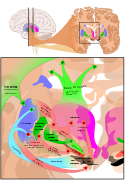



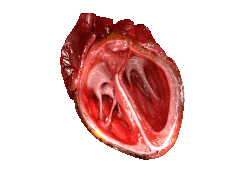









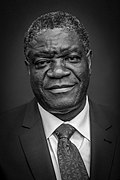

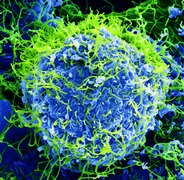
















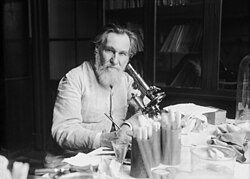
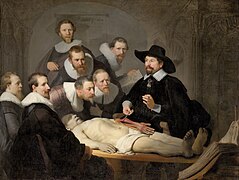


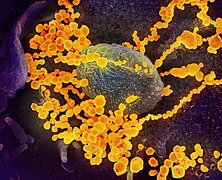
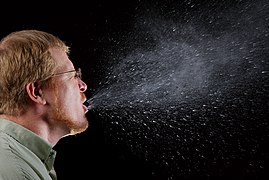


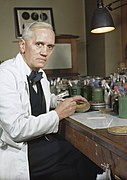




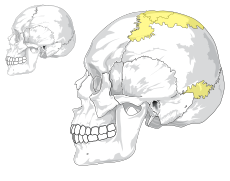






Leave a Comment